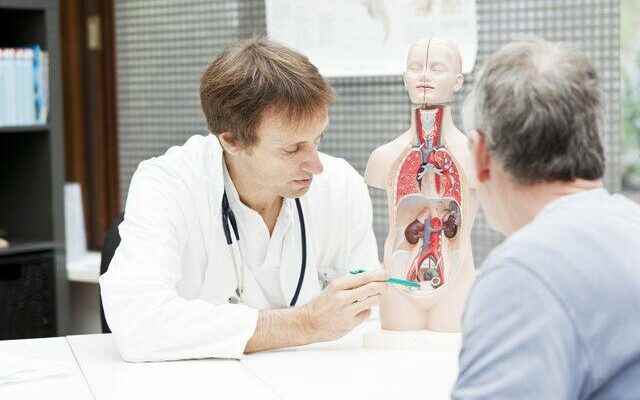The prostate, which is a secretory gland, is an organ located just below the bladder, through which the urethra passes and also the tubes that bring the sperm from the testicles open. The prostate, weighing 18-20 grams, consists of secretory cells (tubuloalveolar glands). The main function of the prostate gland is to secrete part of the fluid that makes up the semen. 90% of the semen that comes out during sexual intercourse or masturbation is produced in the prostate gland. In addition, the prostate squeezing the mouth of the bladder prevents urine from escaping. The prostate, which looks like an inverted pyramid, is located just above the urinary bladder. Associate Professor from the Urology Department of Memorial Kayseri Hospital. Dr. Bülent Altunoluk gave information about prostate enlargement and its treatment.
GROWTH RATE CAN INCREASE WITH AGE
Prostate enlargement is manifested by the enlargement of glands in the inner part of the prostate, especially narrowing and compressing the urethra. When these glands enlarge, they create a resistance to the flow of urine. Therefore, the patient has to contract his bladder more strongly in order to empty his urine. The prostate doubles during puberty. After the age of 25-30, it continues to grow.
Prostate enlargement is thought to be related to testosterone (male hormone) and estrogen (female hormone). Prostate enlargement is seen in half of men after the age of 50, while the prostate continues to enlarge in 65% of men after the age of 60. In the 80’s, this rate is over 90%. The prostate can reach the size of an apple during this period.
SYMPTOMS SHOWING AN ENLARGED PROSTATE
Symptoms usually begin after the age of 50 and continue to increase with age. However, especially if there is a family history of prostate cancer, attention should be paid to symptoms starting from the age of 40 and regular controls should not be neglected.
Waiting for a while when starting to urinate, i.e., late start of urination after the start of urine
- Frequent feeling of urination
- Getting up at night to urinate and urinating frequently throughout the day
- delayed bladder emptying, prolonged urination
- burning sensation while urinating
- Feeling as if there is urine left in the bladder
- Continuation of dripping flow after urination is over
- Frequent urinary tract infection
- Stone formation in the bladder
- Medication reduces symptoms
PROSTATE TREATMENT
Prostate enlargement can be treated with medication. The aim of drug therapy is to reduce the patient’s complaints. “Alpha blocker” drugs are given to interfere with the obstruction caused by the prostate. These drugs, which have low side effects, will give the patient a feeling of relief for a certain period of time. However, due to the increase in the degree of obstruction over time, open and closed prostate surgeries will be on the agenda. In prostate surgery; closed surgeries are performed by entering the urinary canal from the tip of the penis. The inner part of the prostate is removed by cutting it piece by piece. In the laser, the inner tissue of the prostate is vaporized.
